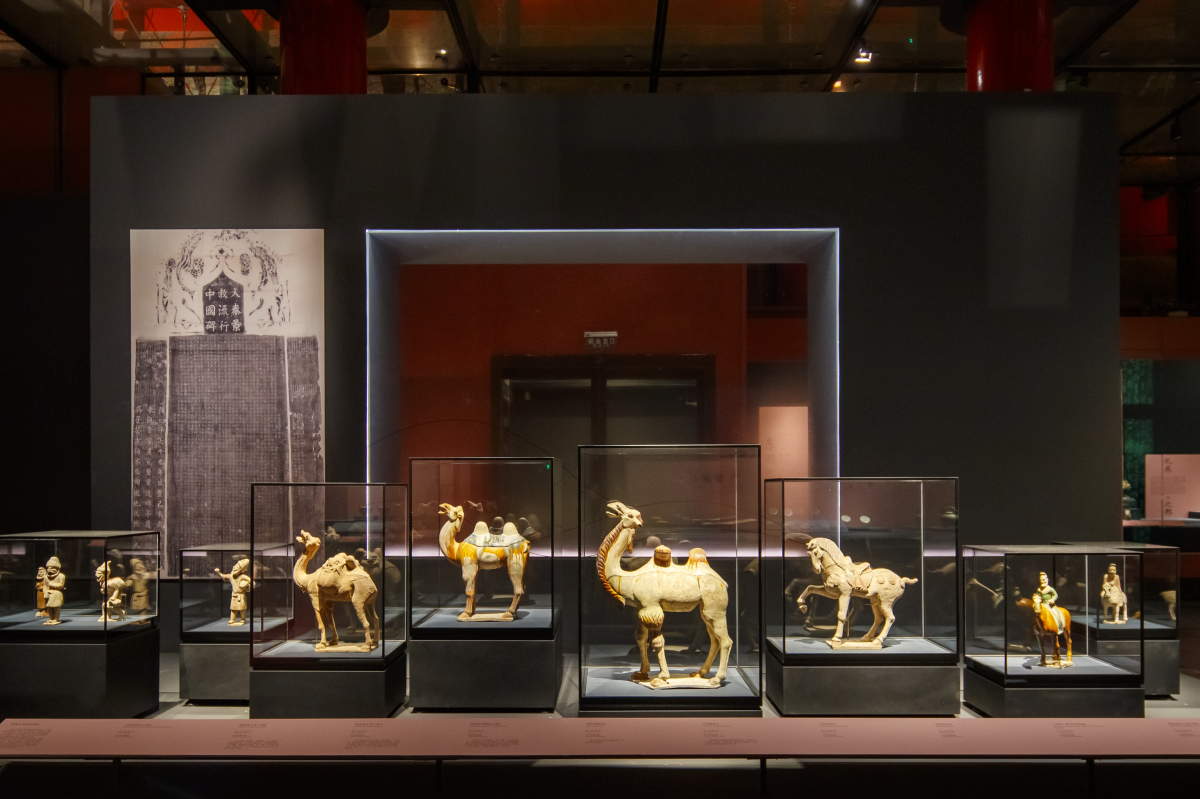Sistertours.com ! WeChat/WhatsApp: +8613811531028
The “Historic Encounters: Interaction Between China and West Asia” exhibition opened at the Meridian Gate (Wu men) main hall on January 12 and will run through April 11, 2024.
Situated at opposite ends of the Asian continent, China and West Asia have long-standing ties dating back to ancient times. From the prehistoric era, the exchanges of agricultural, pastoral, and handicraft practices, as well as mutual learning in arts and culture, have been documented in historical records and integrated into daily life. Together, these ancient civilizations contributed to the glory of the Silk Road, fostering shared prosperity across the Eurasian continent.
The exhibition is divided into two sections: “Reflections of the East and West” and “The Great Road That Connects.” The “Reflections of the East and West” section brings to life the historical encounters and friendship between China and West Asia. Through a range of documents and artifacts, this section portrays the origins of Chinese civilization and its fundamental philosophy emphasizing that “the order and harmony of heaven and earth are echoed in rites and music.” It unveils the early chapters of exchanges between civilizations. “The Great Road That Connects” is segmented into six parts themed on envoys, metallurgy, glass, silk, furniture, and blue-and-white porcelain, respectively. This section showcases the interplay and mutual inspiration in technology, art, culture, and philosophy between the ancient civilizations of China and West Asia. It also narrates the story of China along the Silk Road, emphasizing the inclusive and innovative characteristics of Chinese culture.

The exhibition, grounded on the collections of the Palace Museum, brings together a total of 266 items (or sets) of cultural relics from 10 archaeological and cultural institutions from both home and abroad. These include Datong Museum, the Cultural Relics and Archaeology Institute of Inner Mongolia Autonomous Region, the Ethnic Costume Museum of Beijing Institute of Fashion Technology, Dongguan Museum, Hepu Museum, Famen Temple Museum, Zhengzhou Municipal Institute of Cultural Heritage and Archaeology, Nanyue King Museum, Xinjiang Uygur Autonomous Region Museum, and the National Museum of Iran.
The artifacts span a vast timeline, from the Neolithic era to the Ming (1368-1644) and Qing (1644-1911) dynasties, ranging from bronze, gold, silver, jade, and glass wares to ceramics, textiles, furniture, and sculptures. Among the standout pieces are a boar tusk carving of a silkworm, a cultural relic of the Yangshao culture unearthed at the Shuanghuaishu site in Zhengzhou; a Western Han (202 BC-8 AD) silver box unearthed from the tomb of the Nanyue King in Guangdong; a Tang dynasty (618-907) blue glass plate with intricate carvings from the Famen Temple crypt in Shaanxi; a Tang dynasty brocade with knight imagery from the Astana Cemetery in Turpan; a Shang dynasty (c. 1600-1046 BC) bronze dragon-head knife from the Palace Museum’s collection; a Qing dynasty Qianlong-era red lacquer basin adorned with jade and grape bonsai; and a blue and white porcelain celestial globe vase featuring sea water and white dragon patterns from the National Museum of Iran.